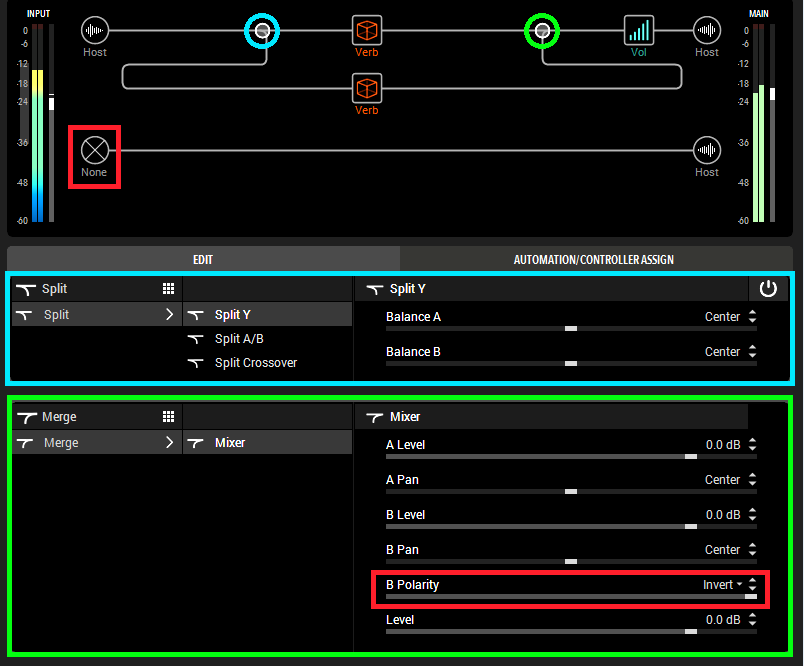Among its array of effects, the Glitz reverb has garnered attention for its modern modulated sound and ability to deliver bigger, ambient tones. In this blog post, we dive into the intricacies of the Glitz reverb, exploring its features, settings.
The Glitz reverb, found within the Line 6 Helix, is a digital effect that offers a modern modulated reverb sound. Drawing inspiration from the renowned Strymon Big Sky pedal, the Glitz reverb is known for its bigger and more atmospheric sonic qualities. This makes it a go-to choice for many Helix users aiming to add blooming, depth and dimension to their guitar tones.

Blooming?
In the 1990s, reverb effects underwent an evolution with the addition of diffusion blocks to create a smoother sound. However, an interesting side effect emerged—reverbs started to exhibit a slowly building envelope known as the "bloom" effect. This resulted in lush ambient reverbs that blended seamlessly with the dry signal, even at high mix levels.
Within the Glitz reverb, there are several adjustable parameters that shape its sound. The decay time parameter controls the length of the reverb tail after the initial sound, allowing you to tailor the duration of the atmospheric effect. The mix parameter determines the balance between the dry and wet signals, allowing you to blend the original sound with the lush reverberation.
One of the distinguishing features of the Glitz reverb is the Xover parameter, which sets the frequency range where the modulation effect takes effect. By adjusting this parameter, you can target specific frequencies for modulation, influencing the overall character and tonality of the reverb. The Depth parameter controls the modulation depth for all oscillators, adding movement and complexity to the reverberated sound.
Making a reverb bloom
One of our fellow bloggers, Craig Anderton, shared an insightful tip on how to create the blooming effect using Line 6 Helix.
- Choose your Reverb: Although demonstrated using a Line 6 Helix preset, you can apply this technique to any reverb of your choice.
- Signal Split and Mixing: In your setup, use a Y split to create two parallel signal paths. Each path goes into a reverb block with identical settings, followed by a mixer block. Set the second parallel input to "None" and the Mixer's "B Polarity" parameter to "Invert." Ensure both reverb Mix parameters are set to 100% and both reverb Level parameters to +6.0 dB. Note that the overall reverb level might be low due to cancellation, but you can boost it with a post-mixer Gain block.
- Implement in a DAW: For DAW use, treat it as a send effect (also known as aux or bus effect). Insert it in a bus channel and create pre-fader sends from the channels that require reverb. Send the pre-fader signal to the reverb bus.

Courtesy of Craig Anderton
- Set the Stage: Lower the channel faders and raise the bus fader. Initially, you won't hear anything due to phase cancellation. This is normal.
- Unleash the Bloom: Open one of the reverb blocks and start playing. Increase the decay time (e.g., one reverb set to 3.5 seconds, the other to 7 seconds). Initially, the attack will cancel, but as the decays differ, the reverb will gradually bloom, creating a mesmerizing effect.
- Fine-Tune the Balance: Finally, bring up the channel faders to adjust the desired balance between the dry sound and the enchanting, liquid-like reverb. Get ready to immerse yourself in a captivating and ethereal soundscape.
Read the original article here
Big Sky vs. Glitz
About a decade ago, I owned the Strymon Big Sky, and it was truly a pedal I adored. During that time, I paired it with the POD 500 (X) and found myself drawn to its blooming and cloud-like effects. However, when I transitioned to the Axe FX II, I made the decision to part ways with my beloved Strymon pedal.
Ever since that moment, there has been a void in me, longing to be filled with the enchanting allure of those lovely reverberations. It wasn't until I sold my Axe FX and embraced the Helix that I felt a glimmer of hope. With the introduction of the "big reverb update," my satisfaction began to take shape. The new reverbs offered by Helix captured my heart, and the desire to acquire the Big Sky once again diminished.
Currently, I am thoroughly satisfied with the range of reverberation offered by the Helix. The longing to reclaim the Big Sky has waned (for now). However, if you're intrigued by a comparison between the two, check out a fellow youtubers video on the subject.
To sum it up
The Glitz reverb in Line 6 Helix offers a modern modulated ambience that can elevate your guitar tones to new heights. With its adjustable parameters, including decay time, mix, Xover, and depth, you have the power to shape lush reverberation. While comparisons to other modulated reverb pedals may vary, the Glitz reverb remains a favored option within the Line 6 Helix ecosystem.



